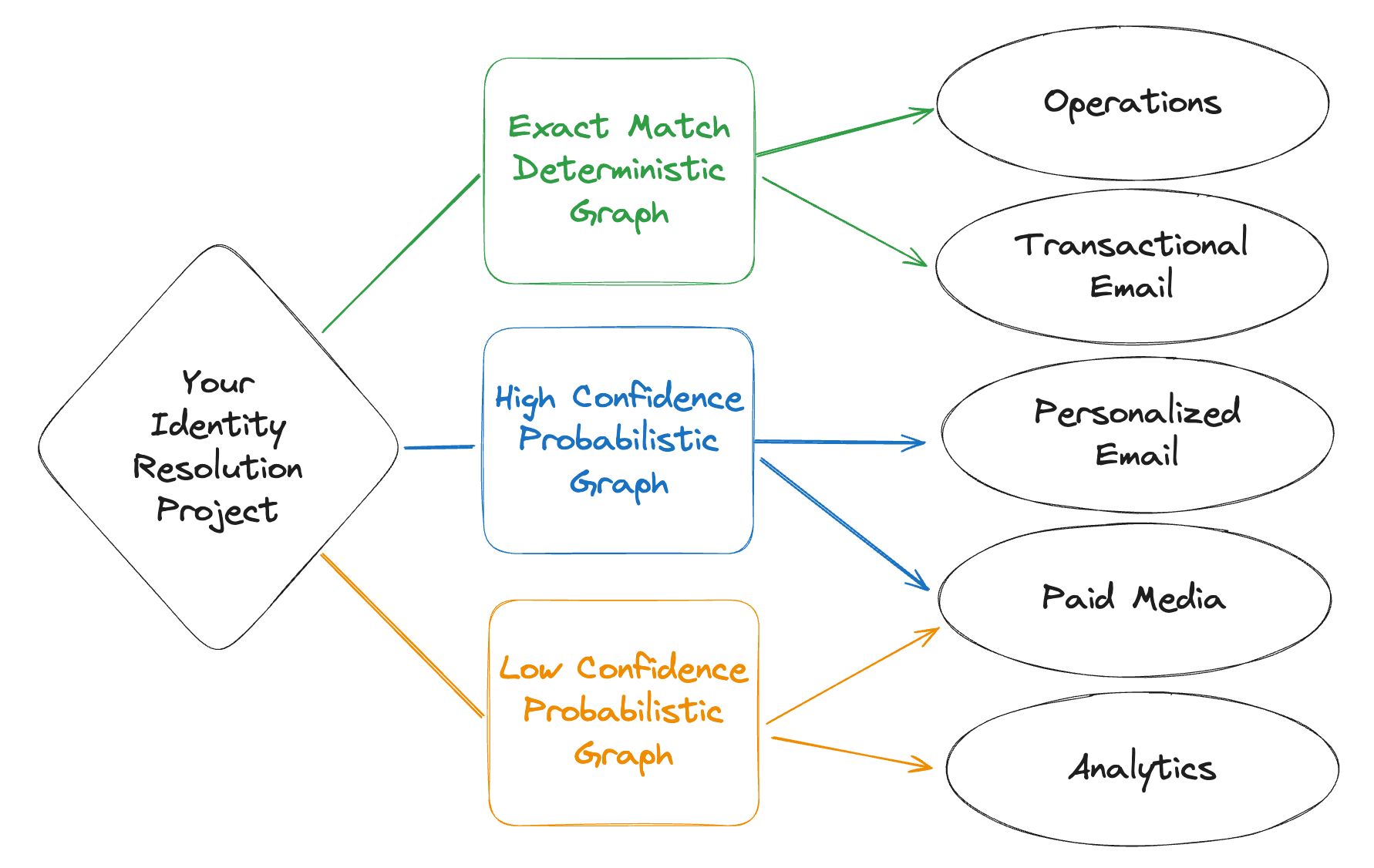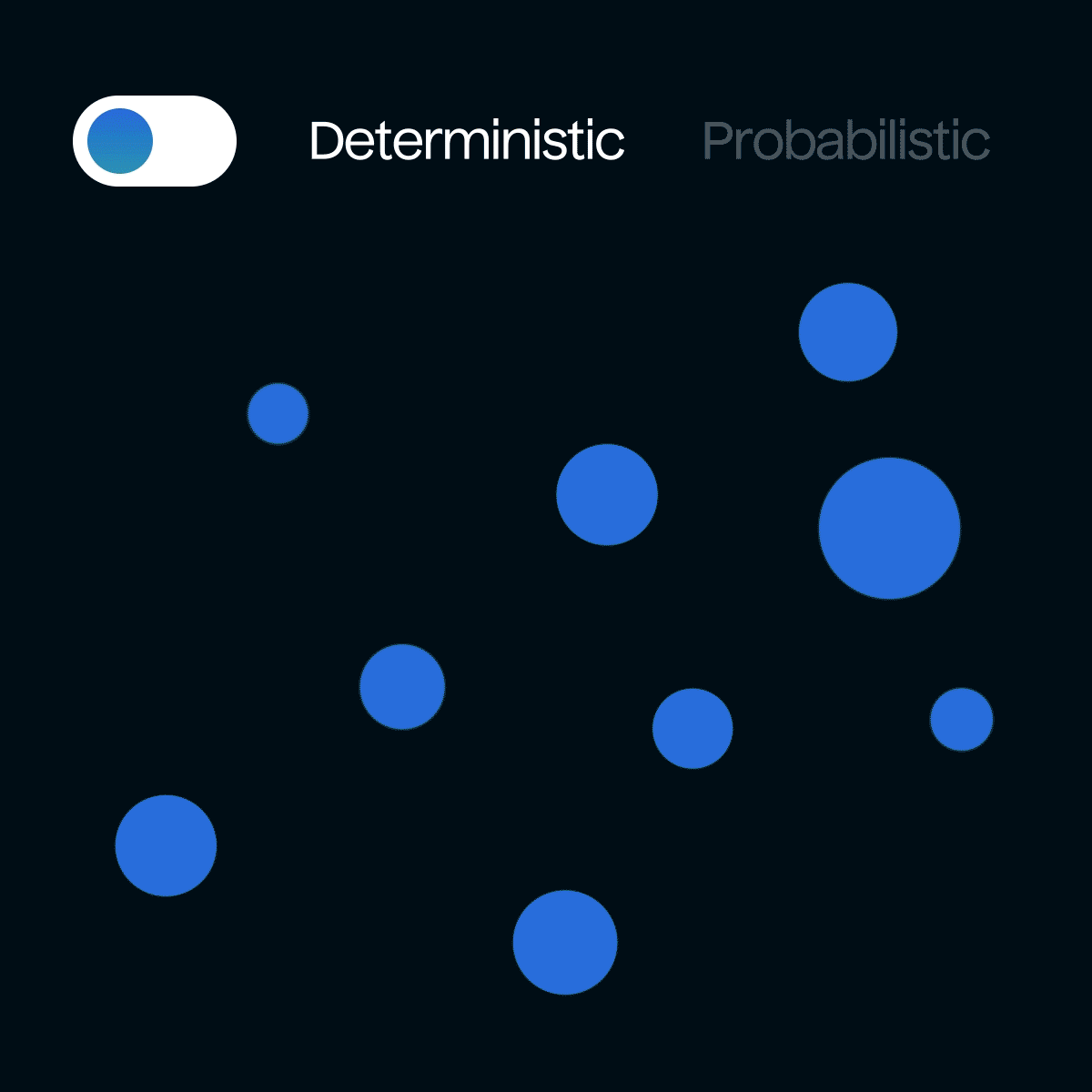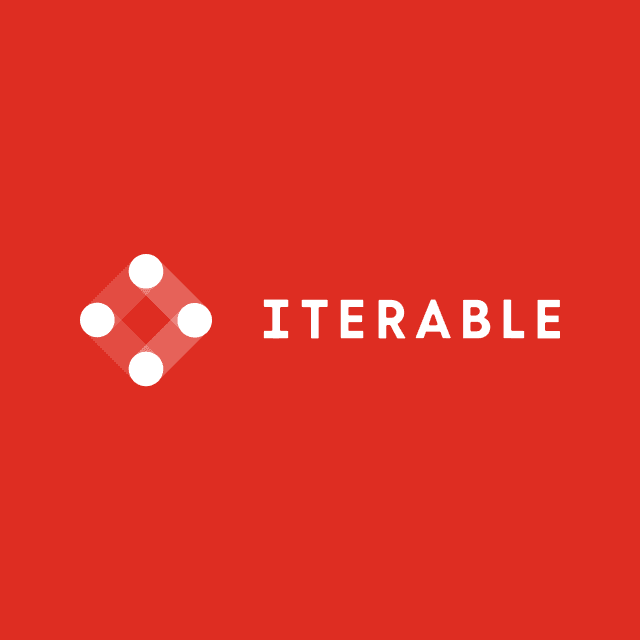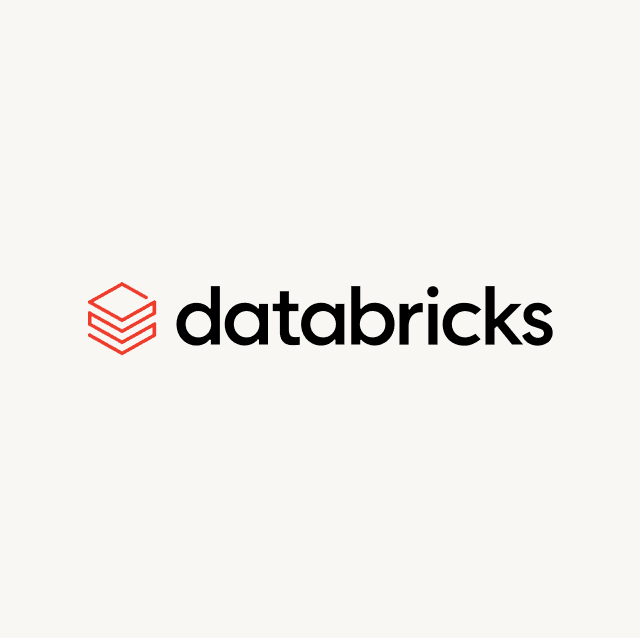Today, Hightouch is thrilled to launch Adaptive Identity Resolution—a flexible enterprise solution for turning messy customer data into usable profiles that adapt to the identity requirements of any business use case.
We built this because we saw a problem with how enterprises manage identity today. Most companies solve identity resolution with a “one-size-fits-all” strategy. They solve identity once, usually with simple deterministic matching, and use it everywhere. But in reality, the right ways to use customer identity, and what customer identity even means, are situational. For example, billing interactions must be correct: if you’re wrong about who you’re talking to, you risk a terrible customer experience or even legal jeopardy. Meanwhile, things like digital advertising have a much higher tolerance for uncertainty and benefit from broader reach.
The fact that customer identity is situational demands a solution that is more flexible, more transparent, and more adaptable to anything that’s been available off the shelf before. That’s why Adaptive Identity Resolution performs both deterministic and probabilistic identity resolution; and unlike traditional identity resolution solutions, Adaptive Identity Resolution is multi-zone: it lets users toggle between using customer profiles stitched together with high-confidence or high-reach match methods.
That means you can quickly and easily align your confidence level to your use case, following strict matches for sensitive scenarios (i.e., direct customer communications) and lower confidence matches for ones that benefit from scale (i.e., creating digital advertising audiences).

Multi-zone identity resolution lets you easily toggle between different confidence levels for different use cases.
Beyond being “multi-zone,” there are a few things that make Adaptive Identity resolution uniquely powerful. Adaptive Identity Resolution is warehouse-native, so it can use all of your data, where it already lives. It is configurable and transparent, so organizations can control precisely how identity resolution works for their use cases. It provides self-serve survivorship rules so organizations can control which identifiers survive onto their final customer profiles.
In the rest of this blog, we’ll explore our novel approach to multi-zone identity stitching and what makes Adaptive Identity Resolution so exciting for enterprises that have struggled with messy data and one-size-fits-all identity resolution solutions.
Why both probabilistic and deterministic identity resolution matter
Customer data is messy. Any company that wants to personalize communications, correctly analyze behavior, and build stronger customer relationships needs to clean this data; otherwise, it’s impossible to know which customer is which. Identity resolution organizes the massive amounts of data you collect so that you can tell which data belongs to which customer.
Deterministic identity resolution unifies data by looking for exact matches of identifiers like email addresses or phone numbers. If a customer used the same email address on two different orders, deterministic identity resolution is a perfect way to stitch records together. It best supports use cases such as critical communications, where accuracy is paramount.
Probabilistic identity resolution is trickier: it stitches profiles together when identifiers don’t exactly match. For example, suppose a customer uses a nickname and a personal email address for one purchase, but their full name and business email address for another. In that case, you need a probabilistic solution to connect the dots. Probabilistic identity resolution inherently requires some degree of machine learning or AI to make the best estimation.
You need probabilistic identity resolution when your data is just too messy for deterministic methods. Probabilistic identity resolution is often required to successfully:
- Match offline (i.e., in-store) transactions to online transactions (full guide here)
- Maximize addressable audiences to use for targeting on paid media platforms
- Improve customer attribution for analytics and machine learning models
Most identity resolution solutions use either deterministic or probabilistic methods. They are one-size-fits-all; a company can’t untangle identity graph results between these methods to use for different situations. Today, we’re charting a new path by letting organizations choose between these methods for different use cases.
What sets Hightouch’s Adaptive Identity Resolution apart from the rest
Many CDPs offer identity resolution. What’s so different about Adaptive Identity Resolution?
Multi-zone (deterministic and probabilistic)
Most CDPs offer either deterministic or probabilistic identity resolution. If they offer both, you can’t decouple them. Hightouch provides both; you can choose the proper methods for the right datasets.
Hightouch draws connections between different customer interactions to cluster them together. With deterministic (high-confidence) methods, there will be relatively few exact matches, and therefore more distinct clusters of users. When you toggle to a higher-reach probabilistic method, you’ll find more connections and have fewer distinct clusters of users.

You can toggle between these high and low confidence “zones” of matched profiles within Hightouch, as needed, for different use cases. You can output a highly accurate deterministic graph for email marketing, and a higher-reach probabilistic graph for digital advertising audiences.
“The magic of combining probabilistic and deterministic methods is that it mirrors how we understand identity in the real world – sometimes with certainty, and other times through educated inference. By bringing this nuanced approach to the data warehouse, we're not just cleaning data; we're enriching the very fabric of the Tredence Cosmos Customer 360. This allows our clients to move beyond basic personalization to true, context-aware conversations with their audience.”

Praveen Satyanarayana
Senior Director of Customer Experience Management at Tredence
Warehouse-native
Adaptive Identity Resolution is powered by your data warehouse. That means it can use all the data you’ve collected—not some narrow silo that you have to ingest into a separate CDP. It stores data only in your owned infrastructure and writes your completed identity graph directly into your data warehouse, which means you can also use it for analytics or in any other tool across your business. And if you stop using Hightouch’s product, that data stays in your owned data warehouse. It does this while preserving the simple setup you’d expect from an out-of-the-box packaged solution.

Warehouse-native identity resolution can use any data, from anywhere in your business.
Configurable and transparent
Adaptive Identity Resolution is fully configurable and transparent. There’s no black box here: you’re in control whether you use deterministic methods, probabilistic methods, or a mix of both, and can make adjustments based on the results you see. In most CDPs, you can’t control identity resolution rules or inspect the machine learning models that drive probabilistic identity resolution. With Hightouch, you stay in control of your data. Another unique layer of control in Hightouch is that you can establish your key deterministic matching rules and then layer probabilistic identity resolution on top of that foundation.

Control exactly how your profiles get stitched together—whether you use deterministic or probabilistic resolution strategies, or both!
No-code Golden Records
Keeping with our ethos of self-serve configurability, we offer a code-free Golden Record solution in Adaptive Identity Resolution. Golden Record takes the next step after merging profiles: it lets you choose the final “approved” identifier for each field using both simple and advanced survivorship logic. You can create trusted “final” profiles that power all your marketing and AI initiatives, and choose exactly which data makes the cut. And you’re not limited to just one version of an identifier; you can keep all identifiers in one field, and a single best version in another, or any combination you’d like.
Best-in-class data activation
So you’ve created your customer profiles: now what? You get value out of your customer data by putting it to work. And that’s where Hightouch excels. We make it simple to build audiences and cross-channel journeys using your customers’ unified profiles. You sync data from differently optimized identity graphs to different tools to power advertising, email, customer success, and more. Based on the real results in these channels, you can revisit your Adaptive Identity Resolution setup to fine-tune your logic and maximize the ROI you get from your data.
Getting started
Customer data is messy—and it always will be. However, that doesn’t need to be a barrier to success. With Hightouch’s Adaptive Identity Resolution, you can act on your complete customer profiles and match the right customer identities to the right situations. To learn more, book a demo with our team.















